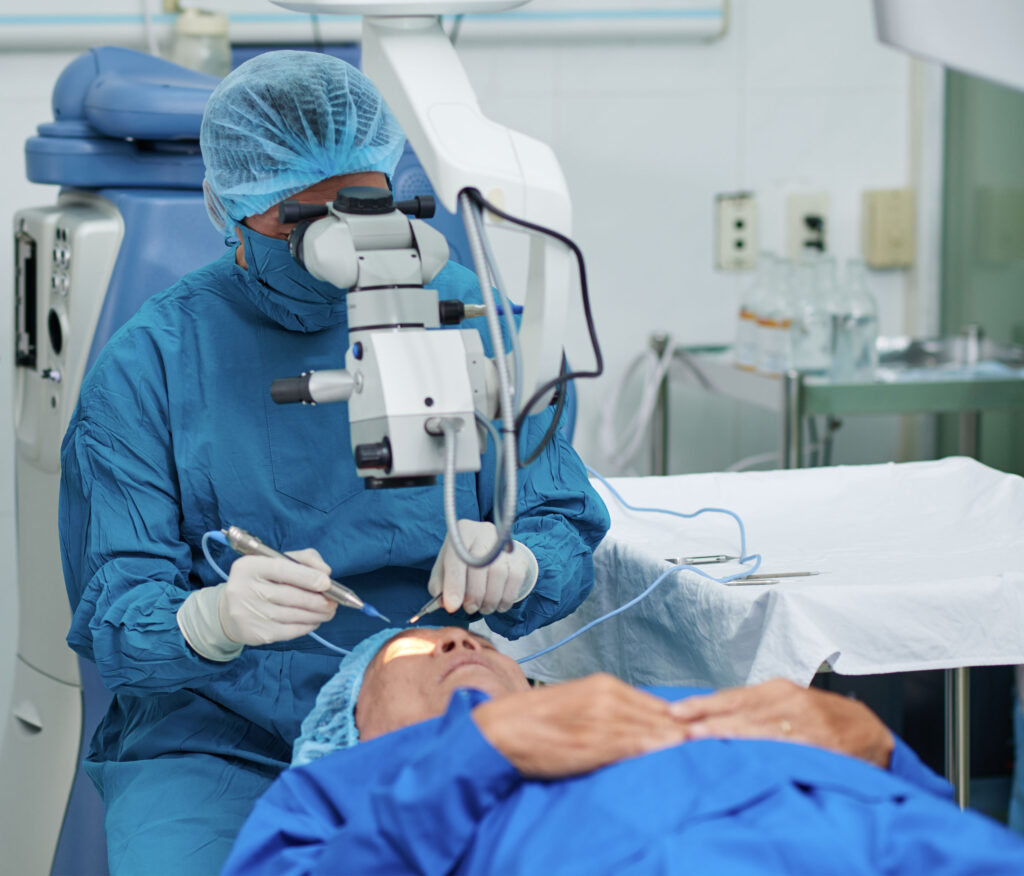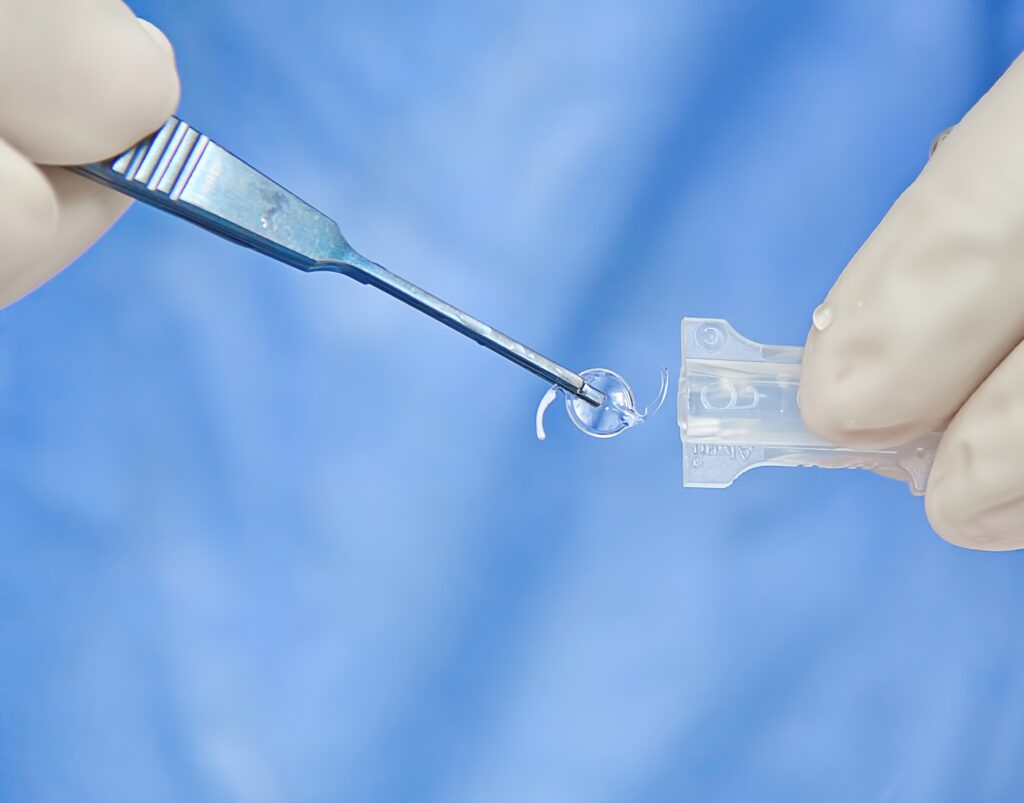A cataract is the clouding of the normally clear lens of the eye, which prevents light from entering the eye and
properly focusing on the retina.
Cataracts account for over 48% of the world’s correctable blindness.
42%
AGES 52 TO 64
60%
AGES 65 TO 74
91%
AGES 75 TO 85
Researchers believe there are several causes of cataracts:
Common symptoms of a cataract include:
These symptoms may indicate other eye problems that may also result in blindness if left untreated. If you have any of these symptoms, please schedule an appointment with Thomas Eye Group immediately for a complete eye examination.
Thomas Eye Group offers several treatment packages for cataract surgery. Our doctors and surgery counselors will help you choose the option that best fits your needs.
Recommended for all patients considering cataract surgery. This evaluation, which is not covered by Medicare or private insurance, helps us determine your surgical options, including the type of lens implants that could be offered to you.
Designed for patients who wish to limit the use of glasses for distance and near. Patients may still need glasses in certain settings such as poor light, fine print, or at night. This package includes special testing and astigmatic evaluation, contact lens trial, standard IOL, and standard cataract follow-up regimen.
Designed for individuals with astigmatism who wish to perform tasks such as driving without the aid of glasses. Glasses may still be needed for intermediate and near activities. This package includes special testing with astigmatic evaluation, cataract laser surgery with astigmatic correction using a Toric lens, and standard cataract follow-up regimen. LASIK® touch up is included, if necessary.
Designed for patients who wish to achieve good distance and near vision with the aid of glasses. Includes standard testing, standard monofocal lens, and standard cataract follow-up regimen.
Designed for individuals with mild astigmatism who wish to perform tasks such as driving without the aid of glasses. Glasses may be needed for intermediate and near activities. This package includes monovision if desired, as well as special testing and astigmatic evaluation, standard IOL with astigmatism correction using the cataract laser, and standard cataract follow-up regimen.
Designed for individuals that want the best possible expanded range of near and distance without the aid of glasses most of the time. This package includes special testing with astigmatic evaluation. Laser cataract surgery using an advanced multifocal lens or extended vision lens implant may include astigmatism correction. LASIK® touch up is included, if necessary.
Prices subject to change. Not all services are covered by insurance. Certain options are considered an upgrade and an additional cost to the standard vision package. Ask your surgery counselor at Thomas Eye Group for the latest pricing.

Modern cataract surgery is routinely performed with small incision micro-surgery through a process known as phacoemulsification. The cataract removal and surgical processes are done using the smallest possible incision and removal of the lens material is accomplished using an ultrasonic probe.
Thomas Eye Group proudly offers the FDA-approved CATALYS™ Precision Laser System. The CATALYS™ advanced 3D imaging technology builds a 3D map of each eye and tailors the treatment to that map. This enables our surgeons to create a customized treatment plan that matches the uniqueness of each eye and is ten times more precise than manual surgery.
Thomas Eye Group surgeons use CATALYS™ to create a circular opening for accessing and removing the cataract. CATALYS™ then softens and breaks up the hard cataract into tiny pieces, allowing for gentler, easier cataract removal.


After the cataract is removed, your surgeon implants an intraocular lens. Patients can choose from a monofocal (to correct either nearsightedness or farsightedness) or premium lens implant (to reduce or eliminate the need for glasses after cataract surgery). Traditional monofocal lenses are covered by Medicare. There is an additional cost to upgrade to premium IOLs.
Intraocular lenses come in a variety of materials and designs, including UV filtering, multifocal (enabling patients to see both at distance and near without the aid of glasses) and accommodating lens implants, which move inside the eye to emulate the natural process of the eye’s crystalline lens. Your doctor will discuss your options with you in your consultation and pre-operative eye exams.
Most cataract surgery patients obtain better vision within the first 24 hours of the procedure. Itching and mild discomfort are normal and should subside within two days. Some fluid discharge is also common. Your eye may be sensitive to light and touch.
Your doctor will prescribe eye drops to help your eye heal and decrease the risk of infection. To allow your eye to heal, your doctor may advise you to limit physical activities, including:
In most cases, healing will be complete within eight weeks. Your doctor will schedule exams to check on your progress.
The material contained on this site is for informational purposes only and is not intended to be a substitute for professional medical advice, diagnosis, or treatment. Always seek the advice of your physician or other qualified health care provider. Section 1557 – Affordable Care Act (ACA)
Due to a high call and chat volume on Mondays, you may experience a brief delay in response.